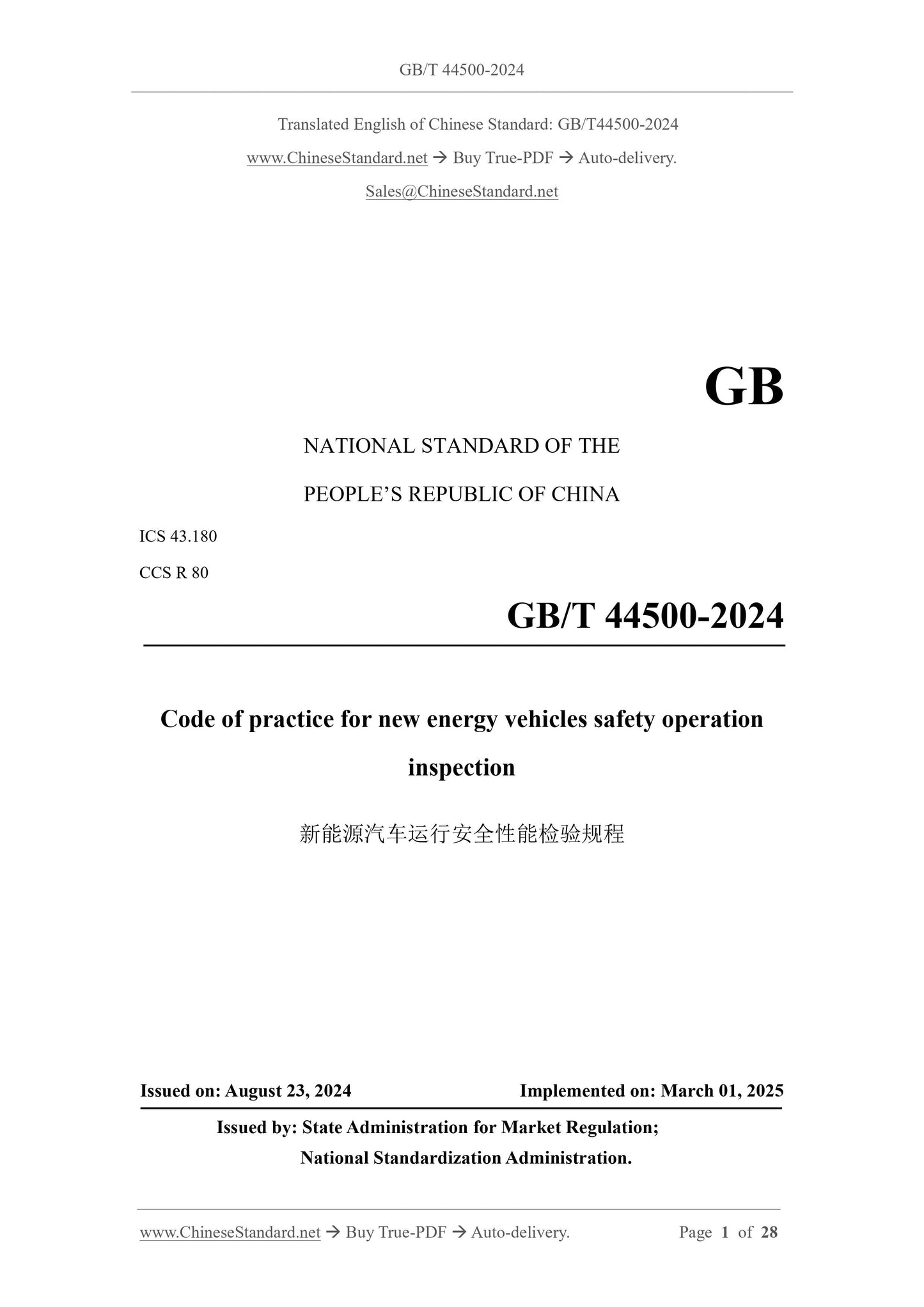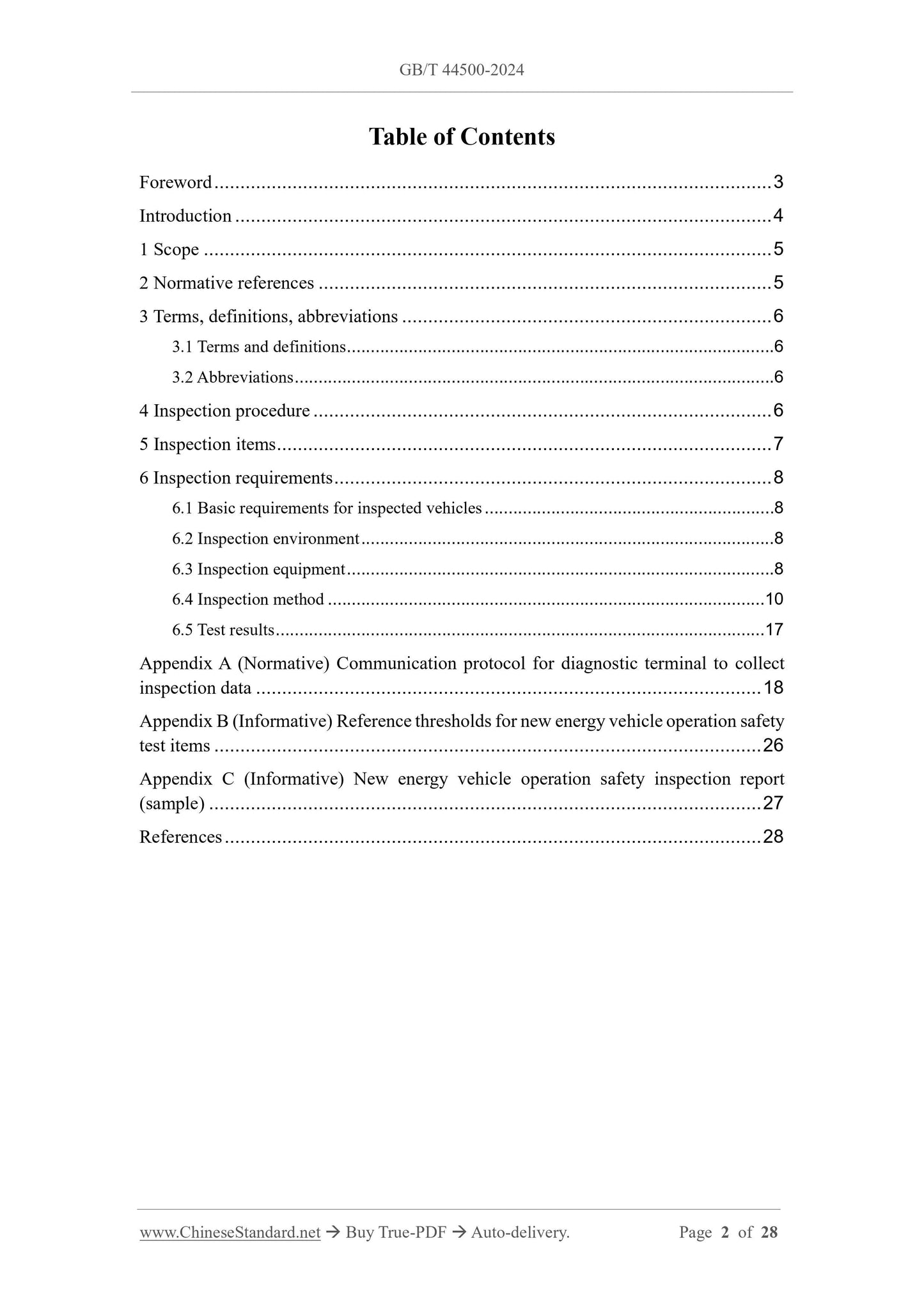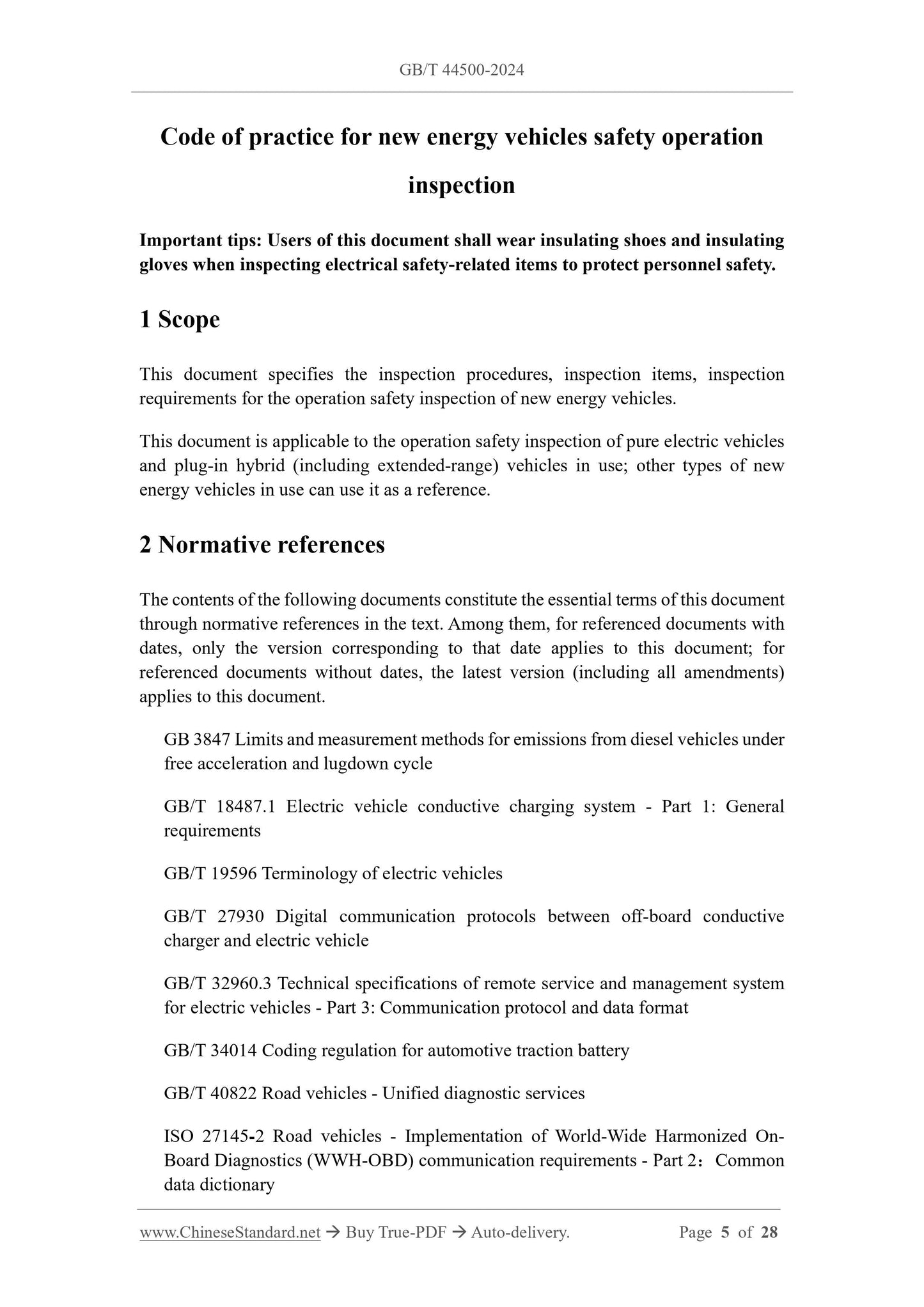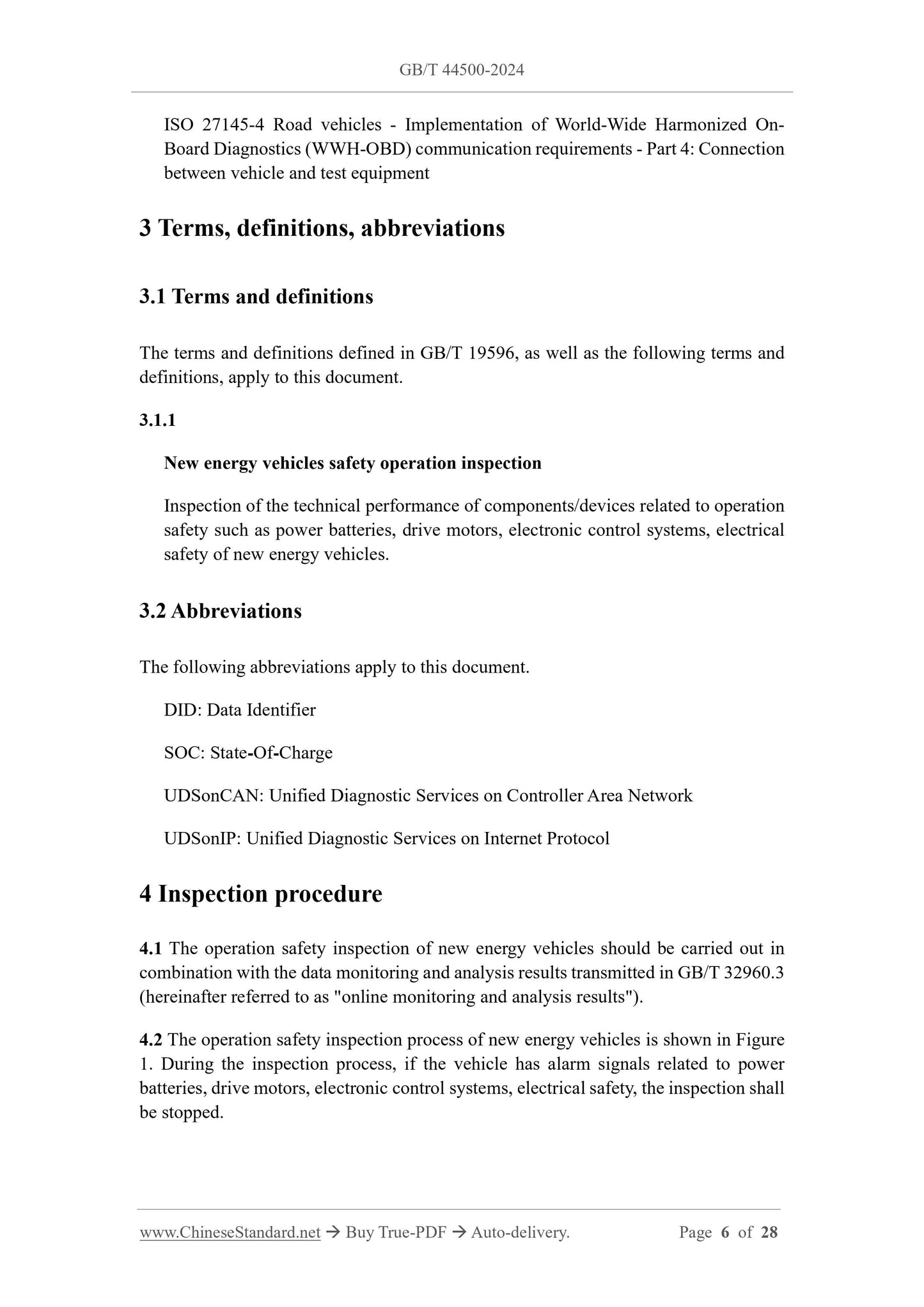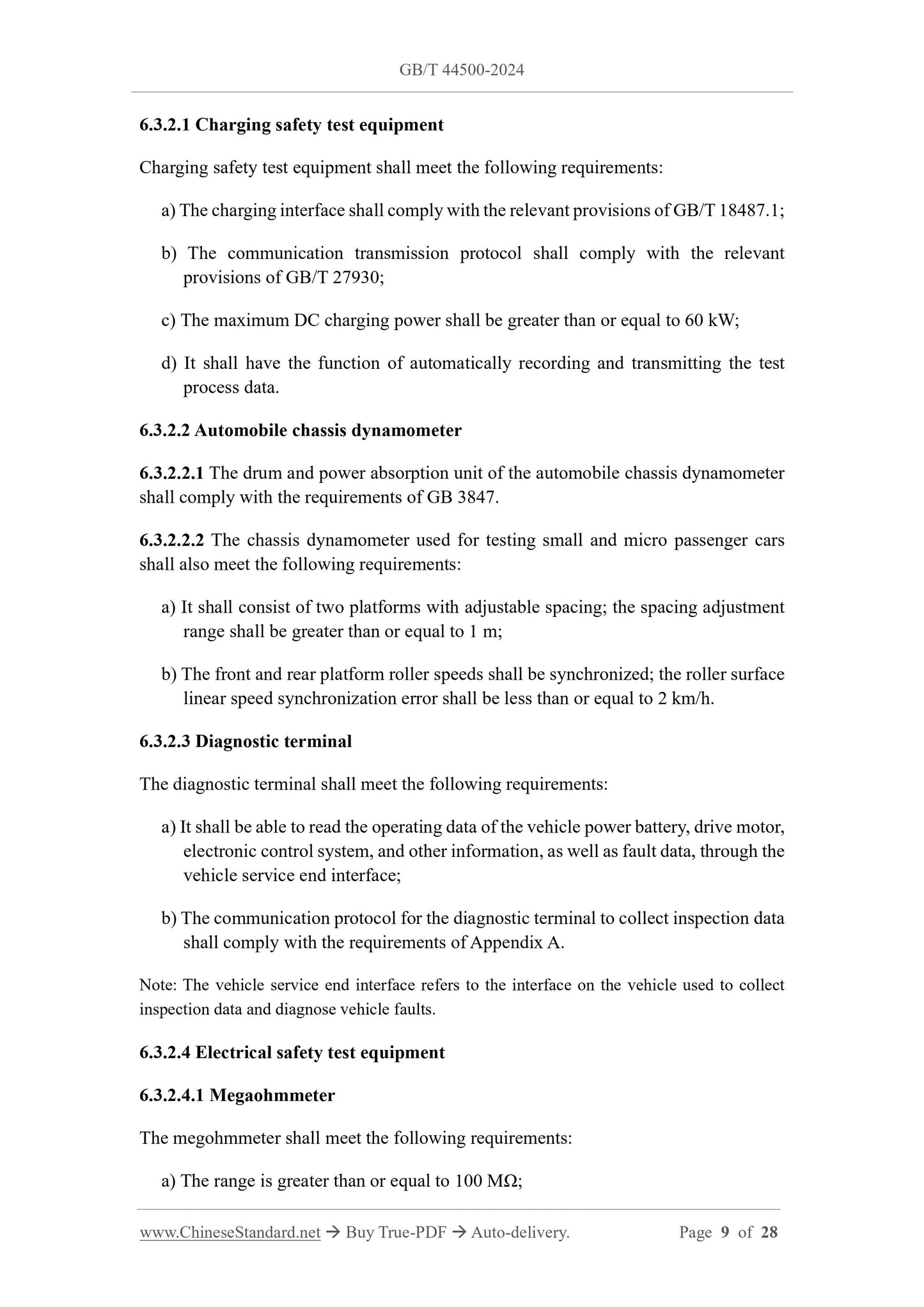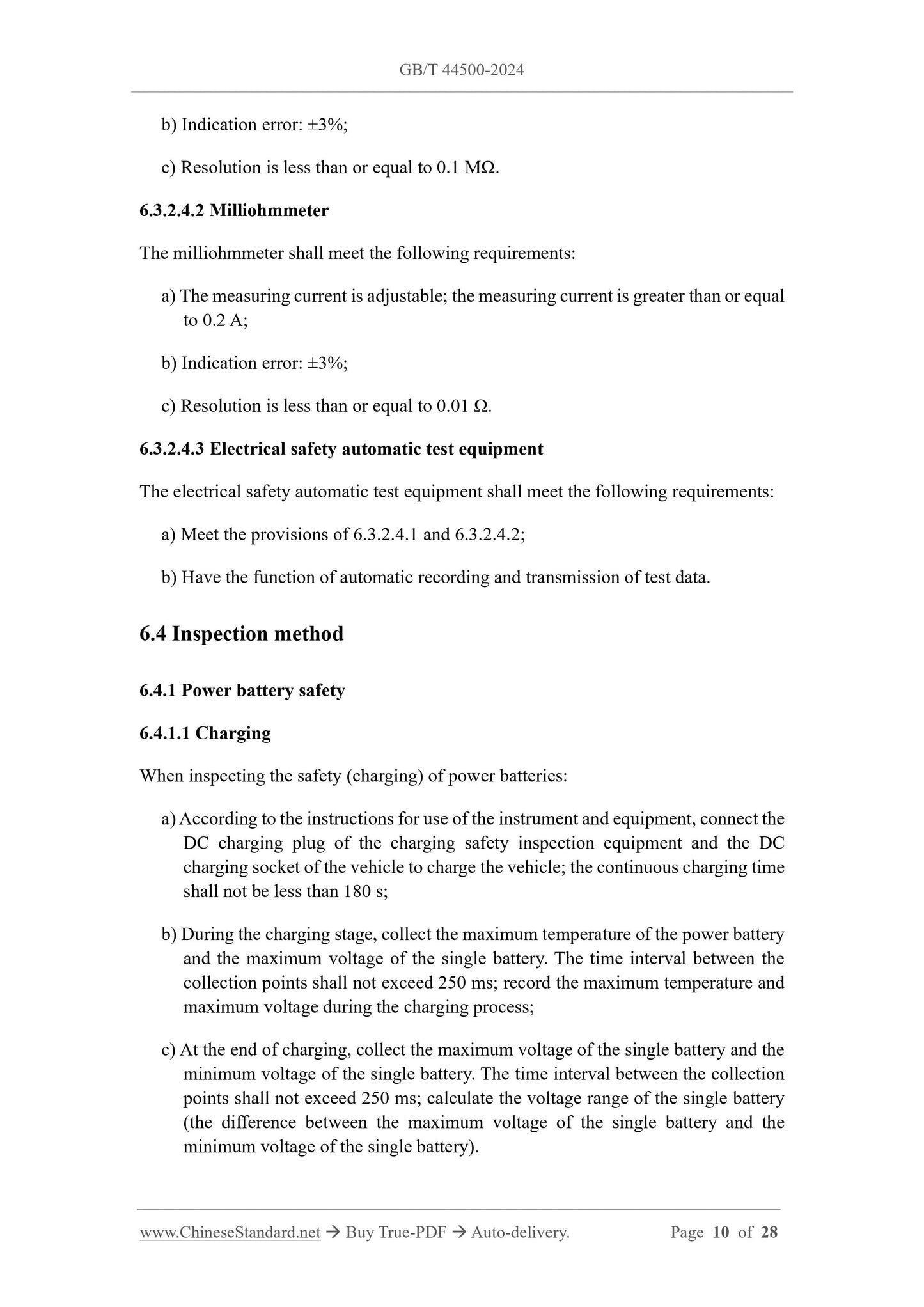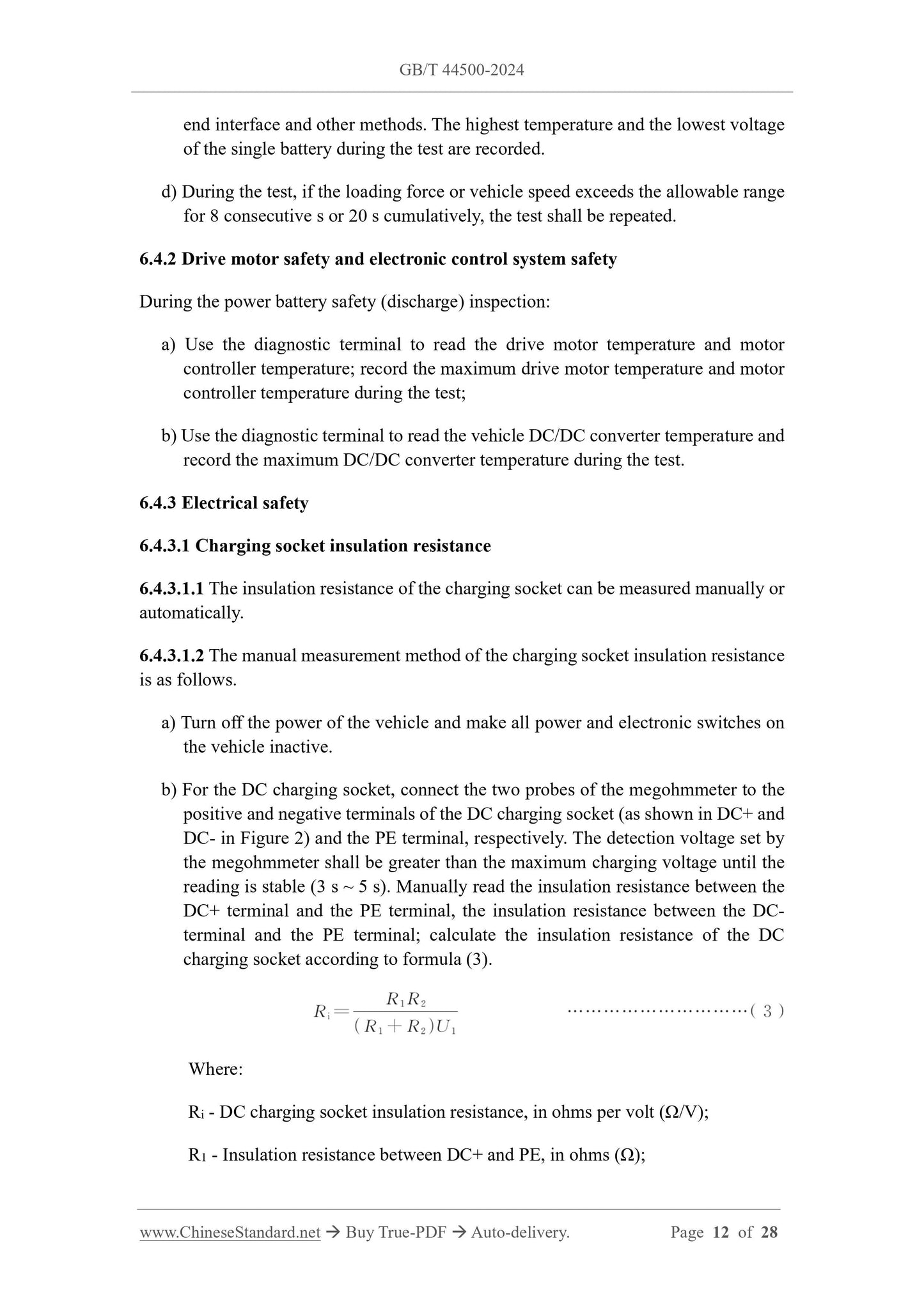1
/
of
9
www.ChineseStandard.us -- Field Test Asia Pte. Ltd.
GB/T 44500-2024 English PDF (GB/T44500-2024)
GB/T 44500-2024 English PDF (GB/T44500-2024)
Regular price
$440.00
Regular price
Sale price
$440.00
Unit price
/
per
Shipping calculated at checkout.
Couldn't load pickup availability
GB/T 44500-2024: Code of practice for new energy vehicles safety operation inspection
Delivery: 9 seconds. Download (and Email) true-PDF + Invoice.Get Quotation: Click GB/T 44500-2024 (Self-service in 1-minute)
Newer / historical versions: GB/T 44500-2024
Preview True-PDF
Scope
This document specifies the inspection procedures, inspection items, inspectionrequirements for the operation safety inspection of new energy vehicles.
This document is applicable to the operation safety inspection of pure electric vehicles
and plug-in hybrid (including extended-range) vehicles in use; other types of new
energy vehicles in use can use it as a reference.
Basic Data
| Standard ID | GB/T 44500-2024 (GB/T44500-2024) |
| Description (Translated English) | Code of practice for new energy vehicles safety operation inspection |
| Sector / Industry | National Standard (Recommended) |
| Classification of Chinese Standard | R80 |
| Classification of International Standard | 43.180 |
| Word Count Estimation | 23,251 |
| Date of Issue | 2024-08-23 |
| Date of Implementation | 2024-08-23 |
| Issuing agency(ies) | State Administration for Market Regulation, China National Standardization Administration |
Share
